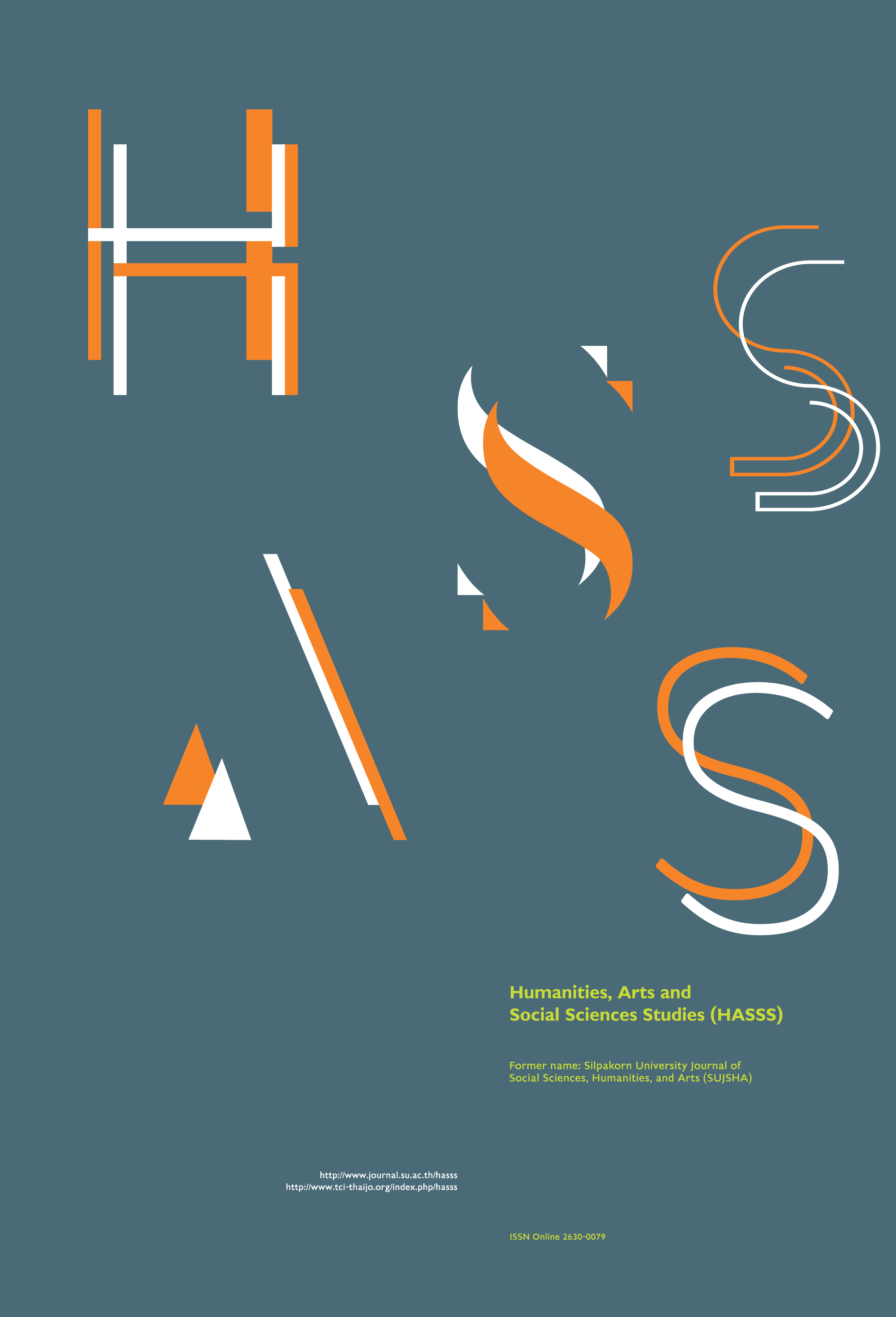Development of a Training Course Focusing on Teachers’ Analytical Thinking Skills in Measurement and Evaluation
Main Article Content
Abstract
This research and development aimed to organize a training course focusing on teachers’ analytical thinking skills in measurement and evaluation. The three phases of the study were as follows: 1) The current state of the teachers’ problems and needs of teachers in analytical thinking skills; 2) A training course was developed; and 3) Designing a course trial and efficacy assessment were implemented through one-group pretest-posttest design during May 11-12, 2017. The sample was 440 teachers teaching at elementary and secondary schools level from five regional regions in large schools, Thailand. They were chosen via multi-stage random sampling for phase 1. Five experts were selected by purposive sampling in phase 2. A total of 30 teachers from the sample volunteered to take part in the research. Research instruments included interview, questionnaire, test, assessment form and training course. Each instrument had a content validity value between .80 -1.00 and Cronbach’s alpha coefficients reliability were equal to .93 - .97 The test had difficulties ranging .30 - .77 and discrimination powers ranging .27 - .60 Data analysis employed mean, standard deviation, percentage, paired samples test. The Priority Needs Index (PNI modified) was used and content analysis used for the interview data.
Findings indicated the following:
1. Under actual conditions, the mean of overall measurement and evaluation in teachers’ analytical thinking skills was moderate ( x =2.03, SD=.66). The mean of overall desired condition was high ( x =2.91, SD=.30).
The PNImodified values of priority needs, for all measurement and evaluation in all developments of teachers’ analytical thinking skills, were between 0.40 and 0.48 and the overall mean was 0.43.
2. The developed training course consisted of six aspects, i.e. principles and reasons, objectives, course contents, learning activities, learning materials, and measurement and evaluation. The experts viewed the course were the high appropriate and consistent level ( x = 3.94, SD = .90; x = 4.09, SD = .79) respectively.
3. The results of the course trial and efficacy evaluation revealed that the trainees’ knowledge before and after training differed significantly at a statistical level of .05. The trainees viewed the course as one at the highest satisfied level ( x = 4.36, SD = .62).
Downloads
Article Details
All rights reserved. Apart from citations for the purposes of research, private study, or criticism and review,no part of this publication may be reproduced, stored or transmitted in any other form without prior written permission by the publisher.
References
Chairit Silasadej. (2001) A manual plan for instructional writing focused on learners secondary school. Bangkok: June Press.
Chaiyot Pivitsiritham, Patravadee Makmee and Khammanatt Mungsriritham. (2013) Curriculum development advanced learning assessment training for teachers in basic education. Veridian E-Journal, Humanities and Social Sciences, Graduate School Silpakorn University. 6(1): 448-456.
Incecay G., and Incecay, V. (2010) A case study on needs assessment of English language teachers. Procedia Social and Behavioral Sciences2 (2010): 317–321. Retrieved fromwww.sciencedirect.com
Kriengsak Chareonwongsak. (2010) Analytical thinking. (6thedition). Bangkok: Sukses Media.
Kanyarat Sombutteera and Yupa Thavornpitak. (2015) Response Rate and Factors Associating Mailed Questionnaire Response Rate in Nursing Sciences and Public Health Research.KKU Research Journal(Graduate Studies). 15(1): 105-113.
Malcolm, S. K. (1980) The modern practice of adult education: From pedagogytoandragogy. New York, NY: Cambridge, The Adult Education Company.
Marut patpol. (2014) Learning management that enhances knowledge and happiness in learning. (2nd edition). Bangkok: Charan Sanitwong Press.
Marzano, R. J., and Kendall, J. S. (2007)Taxonomy of educational objectives.2nd Thousand Oaks, CA:Corwin Press; London: Sage.
Ministry of Education. (2010) Core curriculum for basic education BE 2551. (2ndedition). Bangkok: The agricultural cooperative federation of Thailand.
Office of Basic Education. (2015) Number of schools, students, teachers, and classrooms by size of students under the office of basic education, academic year 2015. Retrieved from https://www.m-society.go.th/article_attach/16998/19591.pdf
Nuntiya Chaimatchim, Oranuch Seesaard and TatsirinSawangboon. (2014) The needs assessment for science teachers development in measurement and evaluation of critical thinking competency in the secondary school Kalasin province.Journal of educational measurement Mahasarskham University.20(1):118-133.
Pinda Varasunun. (2011) Evaluation capacity building in test construction for elementary school teachers using critical friends’s network. (Doctoral Dissertation). Chulalongkorn university, Faculty of education.
Pinsuda Sirirungtasri. (2014) Improving Thai teacher quality in the 21st century. Bangkok: Mata Press.
Quality educational study. (2017) Retrieved from Educational Initiatives Pvt. Ltd. www.ei.india.com
Suhail Mahmoud Al-Zoubi and Majdoleen Sultan Bani Abdel Rahman. (2011) The effects of a training program in improving instructional competencies for special education teachers in Jordan. Educational research. 2(3): 1021-1030. Retrieved from https://www.interesjournals.org/ER
Suwimol Wongvanich. (2007) Research needs assessment. (2nd edition). Bangkok: Chulalongkorn University Press.
Taba, H. (1962) Curriculum Development: Theory and practice. New York, NY: Harcourt Brace and World.
Teacher representatives and school administrators, Public school in Taphaya distric, SaKaeo province. (2015, April 2). Interview.
Thamrong Buasri. (1999) Theory of curriculum design and development. (2nd edition). Bangkok: Thanadatch Press.
Tyler, R. W. (1949) Basic principles of curriculum and instruction.Chicago, IL: University of Chicago Press.
Wichai Wongyai. (2011) Development of higher education curriculum. Bangkok: Ar An Press.
William R. T. (1992) Designing training and development systems. (3rd Edition). New York, NY : American Management Association.
Wipa Bumrhoechit. (1999) The minimum response rates of mailed questionnaires with sincerity answer required for unbiased estimators. (Thesis). Chulalongkorn university, Faculty of education.
Yamane, T. (1973) Statistics: An introductory analysis. (3rdedition). New York, NY: Harper and Row Press.

